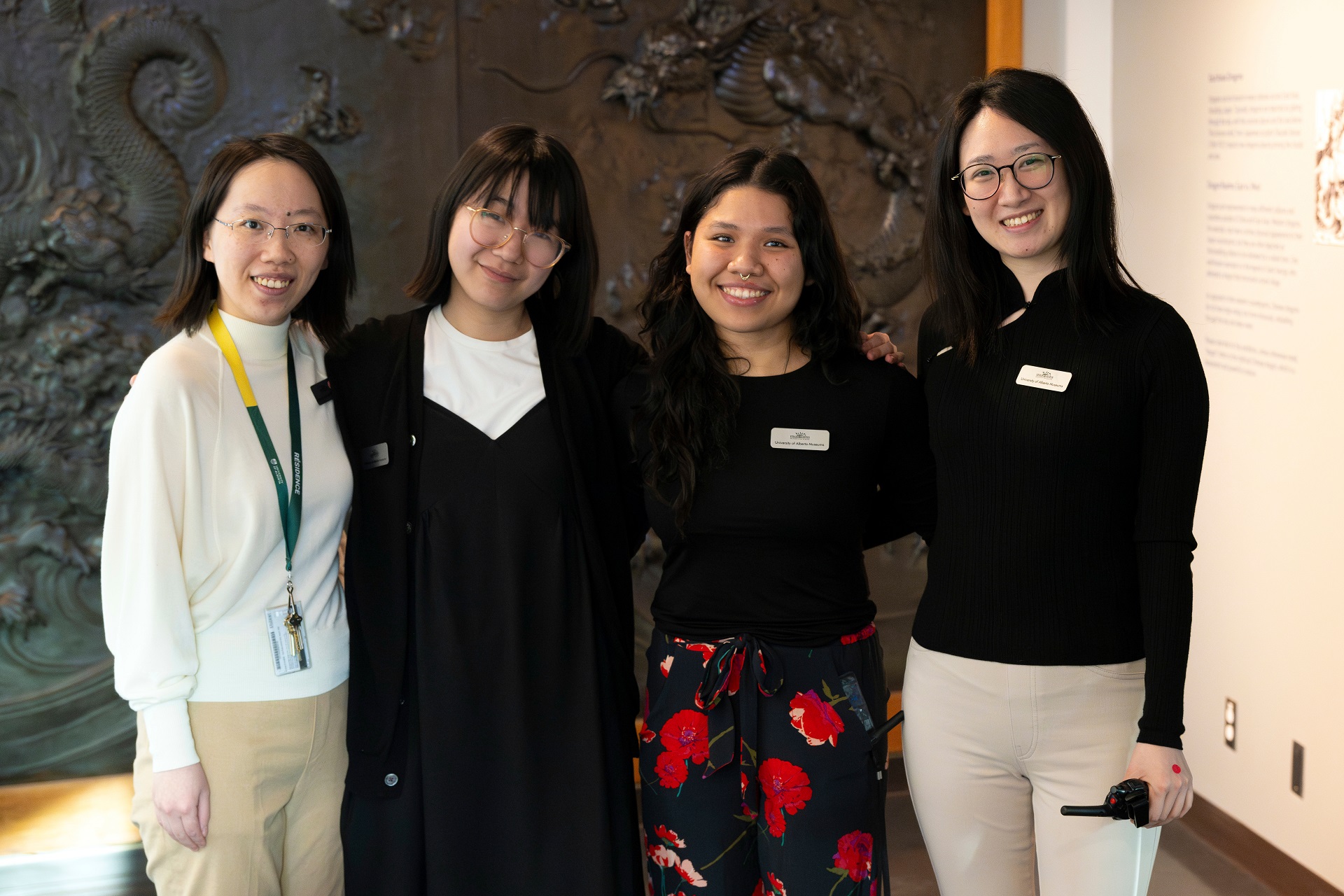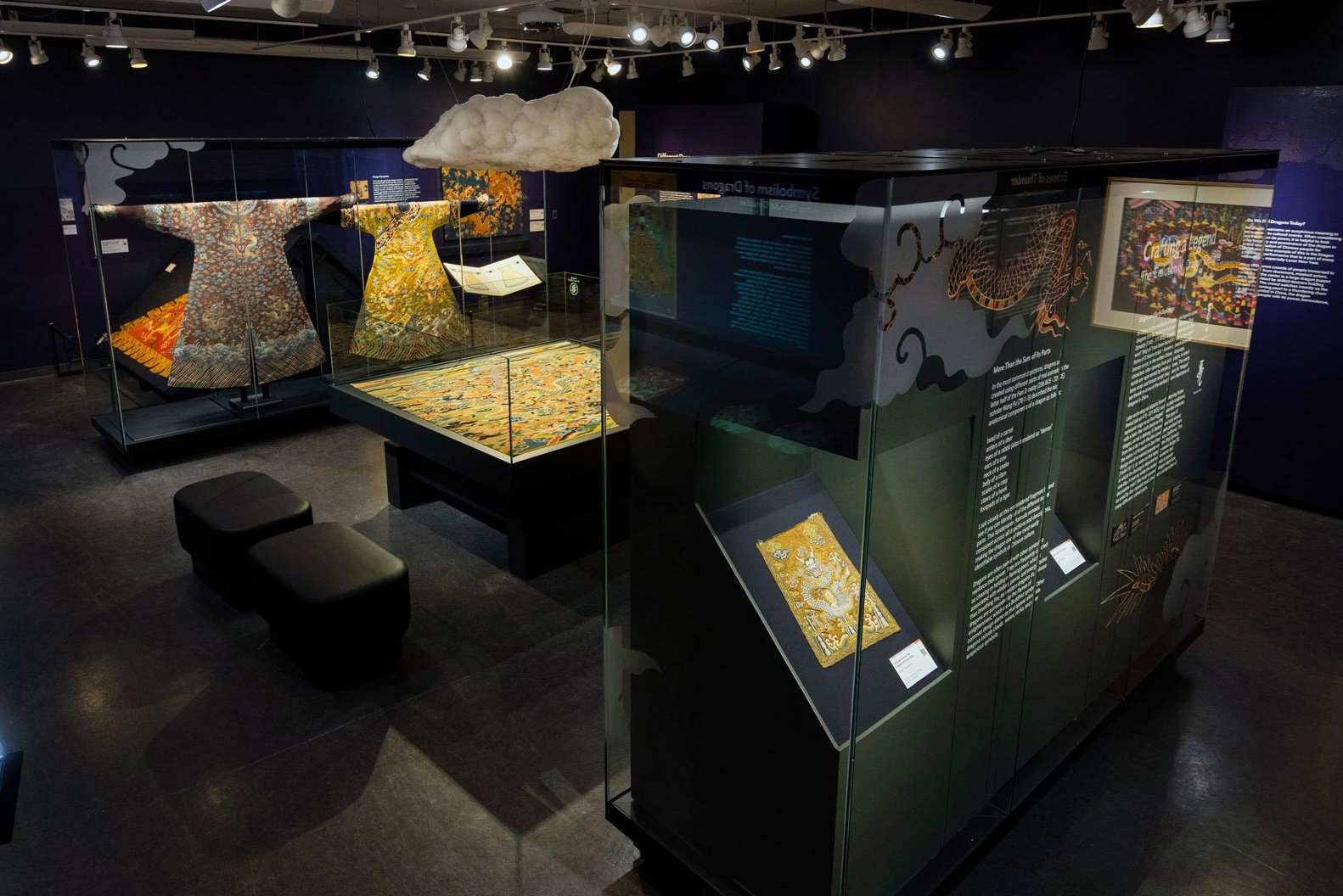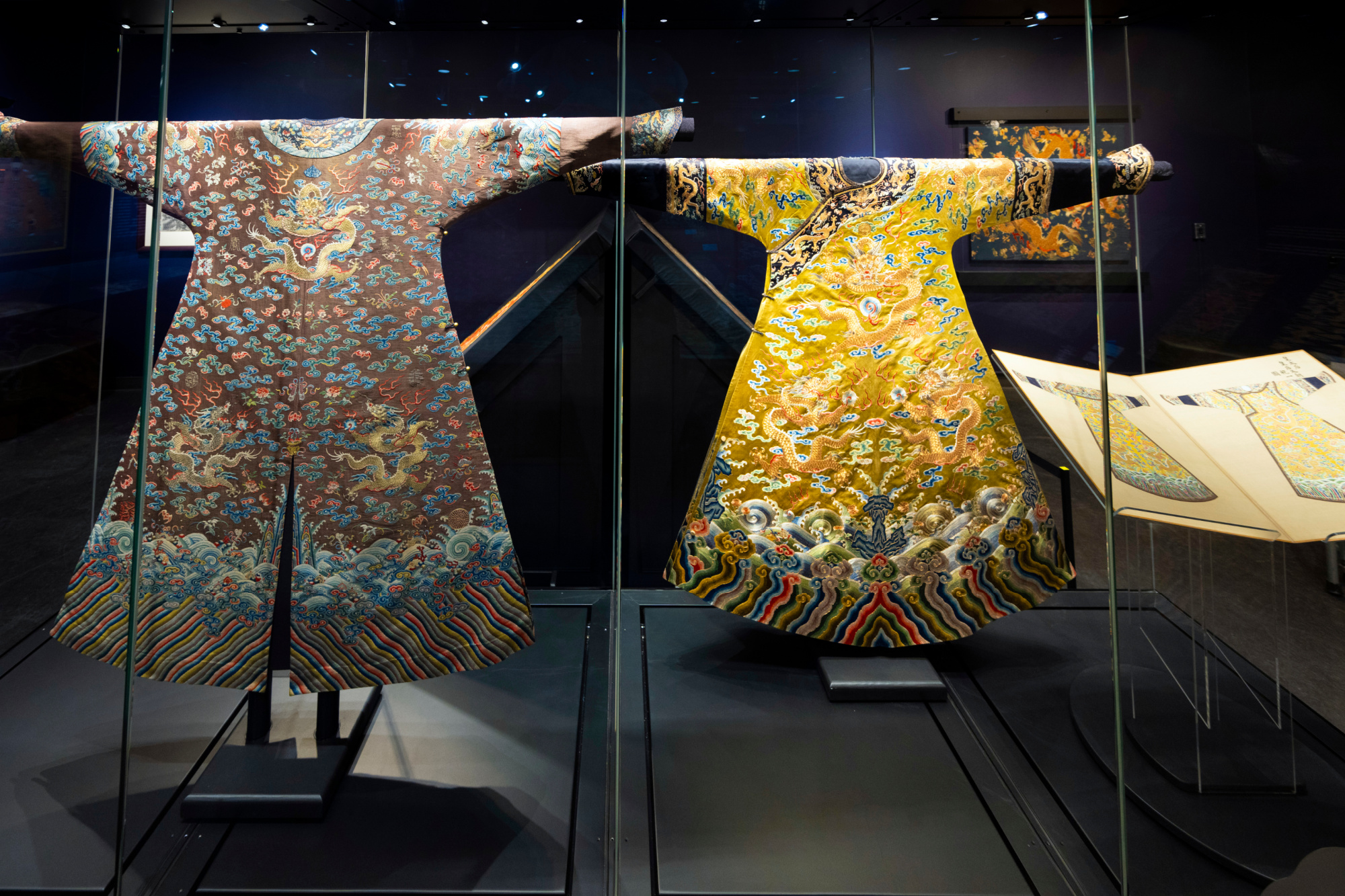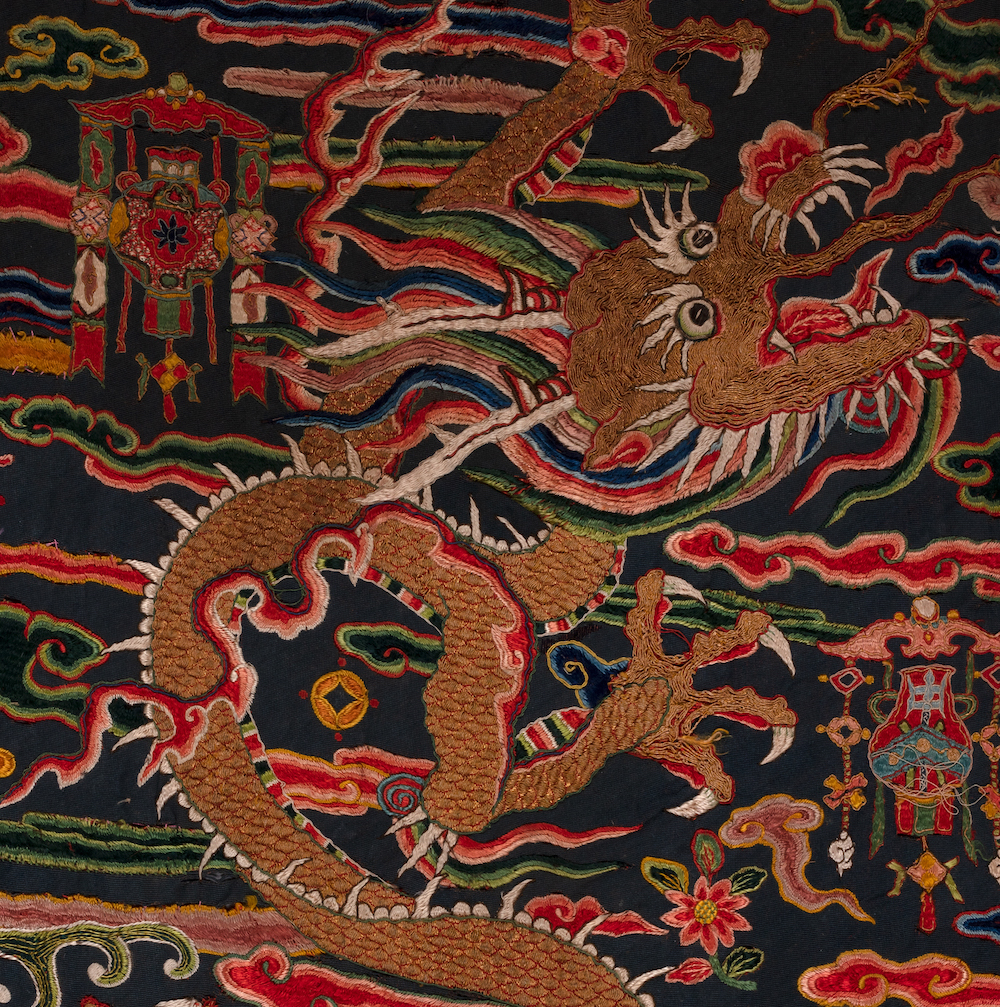Art in Focus: "American Steamship Entering the Harbour" by Utagawa Hiroshige II
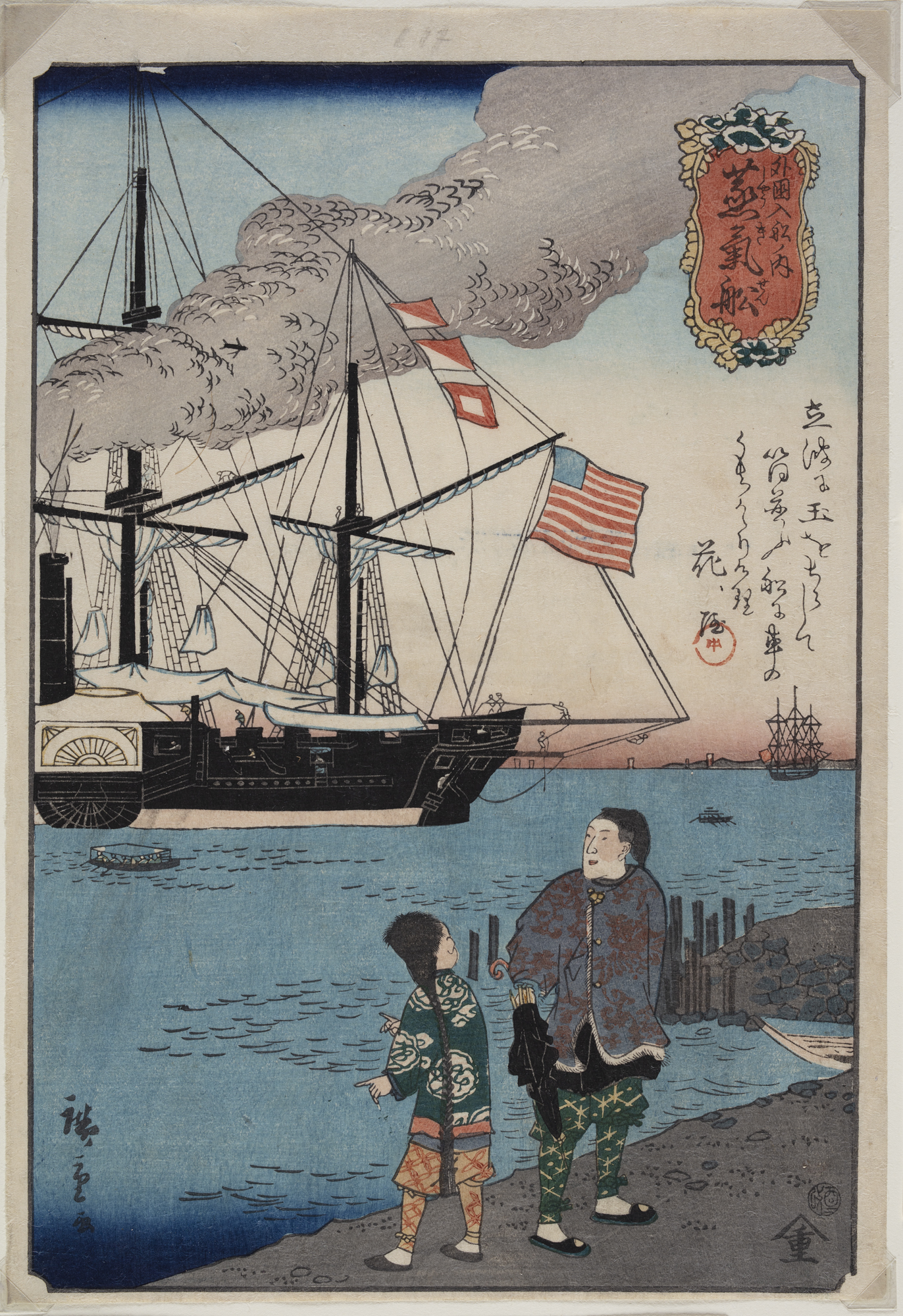
"American Steamship Entering the Harbour", 1861; Ink on paper; block print; Utagawa Hiroshige II: Born 1826, Died Yokohama, Kanagawa, Japan, 1869; University of Alberta Museums Art Collection, University of Alberta Museums: 2007.2.1
During the summer of 1853, Commodore Matthew C. Perry arrived at Edo Bay with a heavily armed fleet of “black ships” with one purpose: to forcefully open Japan up to trade with the United States. At the time, many Japanese wanted to expel the foreigners, however a treaty was signed in 1854, which allowed trade at two ports and another treaty in 1858, which allowed foreigners to live in certain cities.1 In his pursuit of travelling to Japan, Perry recognized not only the enormous trade potential for the US, but also access to wider trade routes where “Japan could act as a station for Pacific mail runs and for American ships in need of supplies.”2
In American Steamship Entering the Harbour (2007.2.1), Utagawa Hiroshige II records the moment Commodore Perry’s ships arrived into Edo Bay. A large black ship takes up the entire top left corner of the print while the blue-grey steam coming from the ship fills the sky. There are two people, clothed in colourful garments in the foreground. The younger person, turned away from us, points at the ship with their finger. The older figure whose body is facing towards us glances to his right side towards the ship.
Utagawa Hiroshige II is an internationally known woodblock printmaker and successor to Ando Hiroshige, a master in the tradition of ukiyo-e. The son of a fireman, Utagawa Hiroshige II entered the studio of Hiroshige I and became one of his most successful students. Hiroshige II inherited the artist name Hiroshige when he married his master’s daughter in 1858 and used it until his divorce and departure from Edo in 1865. Hiroshige II relocated to Yokohama, changed his name to Rissho, and began painting lanterns for a living until his death in 1869.3
This print also represents the famous Japanese woodblock-printing genre, ukiyo-e. Ukiyo-e translates as “pictures of the floating world,” and the development of ukiyo-e style is deeply related to the emergence of a new social class, chonin (“townsmen” or “urban merchants”) during Japan’s Tokugawa-Edo period (1603-1867). Wanting a new type of visual art reflecting their own taste instead of the rigid culture of the samurai class, chonin encouraged production and development of ukiyo-e prints that depict urban outings and popular culture such as kabuki theatre and actors. Using the traditional woodblock printmaking technique to create relatively cheap and largely populated prints, a unique, then-modern style of ukiyo-e prints captured images of kabuki actors and courtesans, but also depicted urban and rural landscapes, and foreigners.4
American Steamship Entering the Harbour is one of many prints and works on paper in the University of Alberta Museums Art Collection that focuses on art from Japan. The collection of Japanese art speaks to the longstanding relationship between the University of Alberta and several print-focused art institutions in Japan. In addition to significant historic ukiyo-e prints, the Art Collection also includes a number of portfolios which contain prints of instructors and students alike.
With the effective use of lines and colours, Hiroshige II records then-contemporary history of Tokugawa Japan as well as Japanese encounters with Western culture. The visual attention devoted to the black ship, the American flag and the people suggests that the print is not about a seascape or the port, but about the encounter of two different cultures.
1 “Commodore Perry and Japan,” Asia for Educators, Columbia University, 16 December 2021, http://afe.easia.columbia.edu/special/japan_1750_perry.htm
2 “People: Matthew Calbraith Perry” Perry in Japan: A Visual History, Brown University, 16 December 2021, https://library.brown.edu/cds/perry/people_Perry.html
3 “Utagawa Hiroshige II 二代目歌川広重,” British Museum, 16 December 2021, https://www.britishmuseum.org/collection/term/BIOG1705
4 Joan Stanley Baker, Ukiyo-e: Glimpses into the Floating World, 18th-19th century Japanese woodblock prints. Victoria, BC: Art Gallery of Greater Victoria, 1982. np.
This web story is part of the University of Alberta Museums Art Collection Spotlight Series, a collection of web stories aimed to share works of art from the University of Alberta Museums Art Collection with the world. Posted monthly, these stories connect works of art in the Collection to important matters on our campus and in our world.
